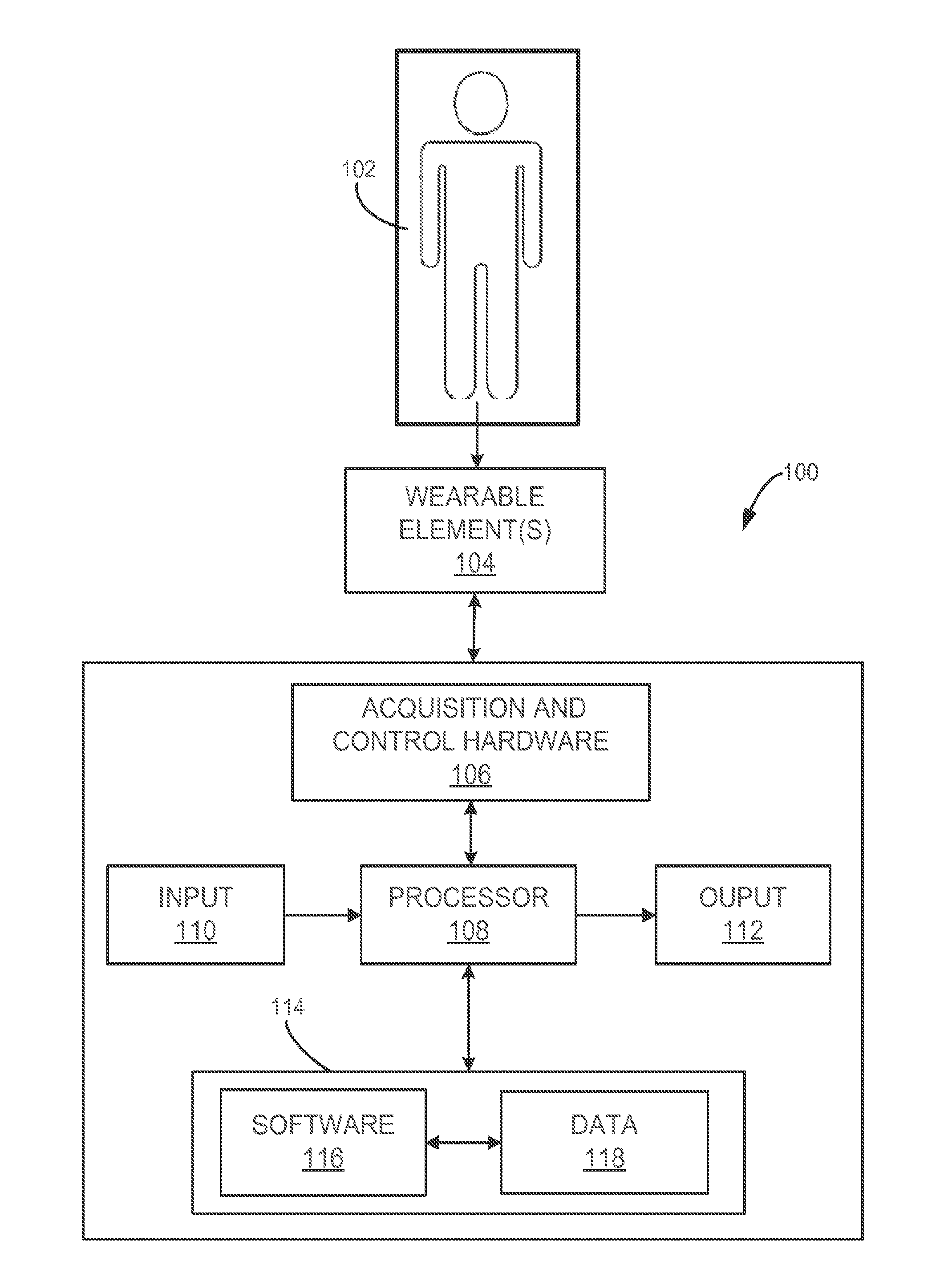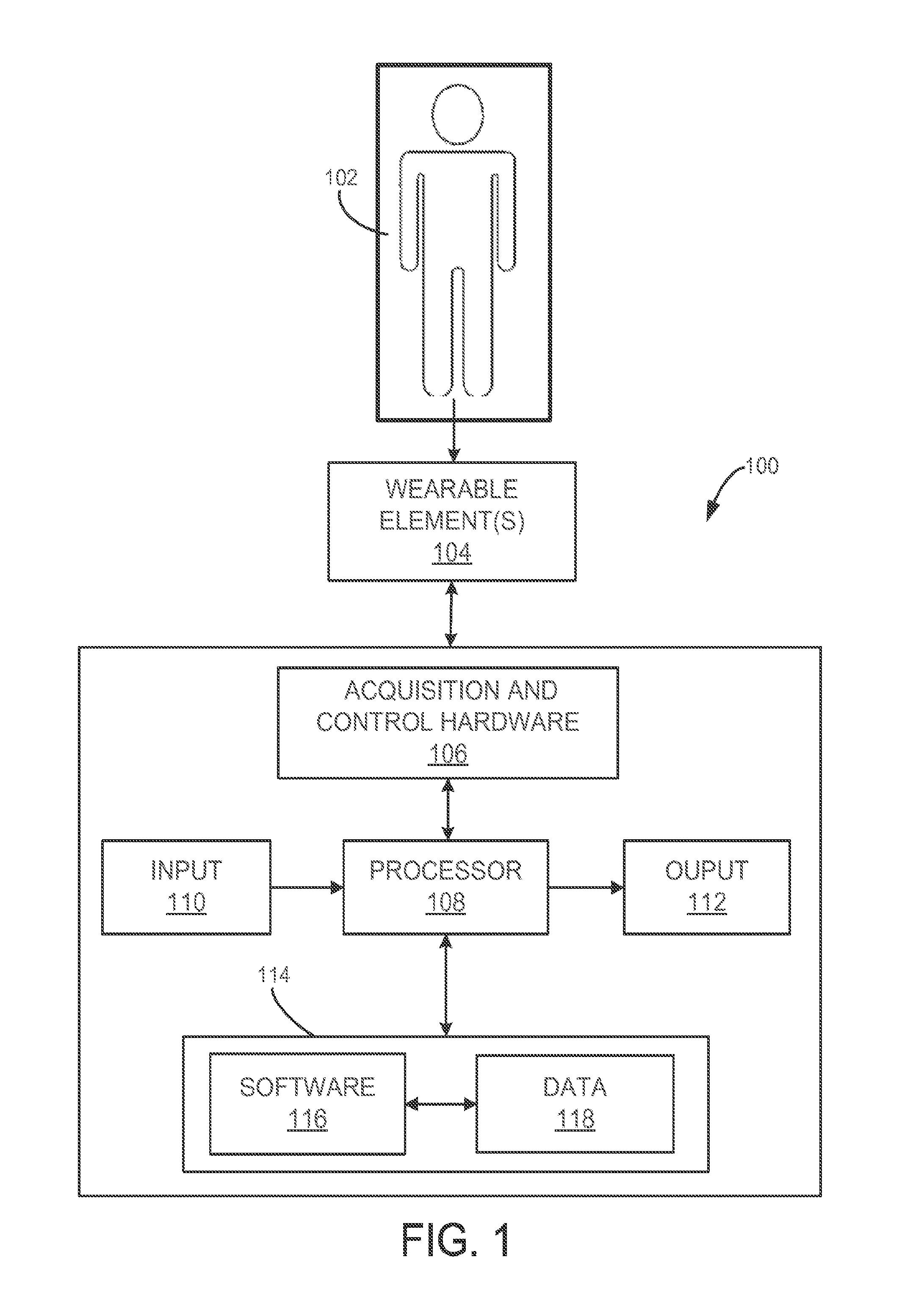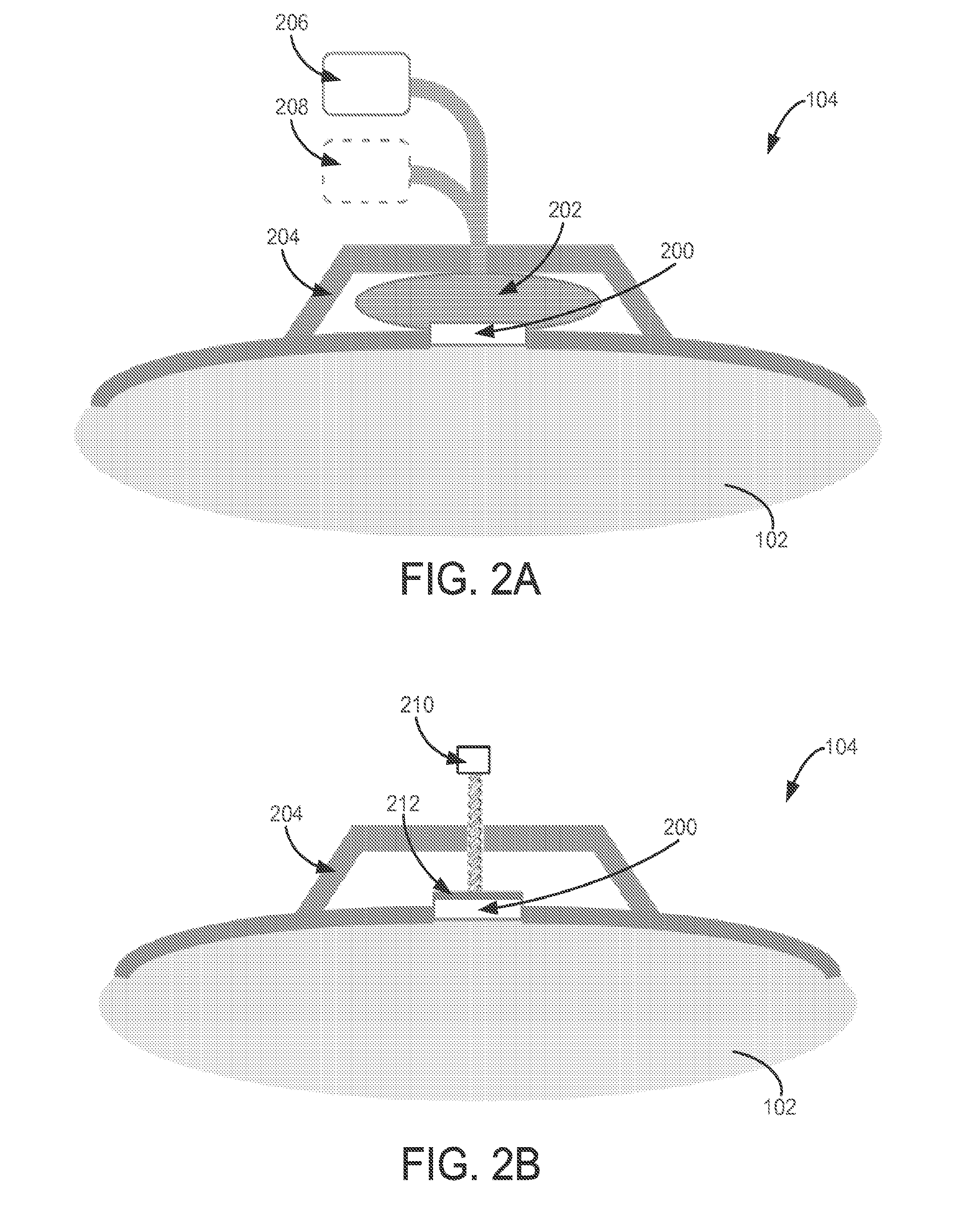System and method for non-invasive, intracranial b rain motion monitoring
a motion monitoring and intracranial technology, applied in the field of electronic methods and systems, can solve the problems of many aspects of the injury process that remain obscure, the pathophysiological mechanisms underlying the tbi are complex, and the tbi remains an inadequately understood medical problem, so as to achieve enhanced brain measurements and high sensitive
- Summary
- Abstract
- Description
- Claims
- Application Information
AI Technical Summary
Benefits of technology
Problems solved by technology
Method used
Image
Examples
Embodiment Construction
[0026]Near-infrared neuromonitoring (NIN) offers the ability to track acute changes in cerebral hemodynamics non-invasively, since human tissue is sufficiently transparent to near-infrared (NIR) wavelengths (650-950 nm), to enable monitoring of the brain. Advantageously, NIR wavelengths are non-ionizing and do not harm biological tissue at typical power densities in the range of 1-4 mW / cm2, as compared to ambient near-infrared light level on a sunny day is about 50 mW / cm2. By employing multiple colors of NIR light on a scalp and placing a detector a few centimeters away, the recorded light intensity may be used to measure concentrations of oxy-hemoglobin (Hb02), deoxy-hemoglobin (HHb), and total-hemoglobin (HbT), which is proportional to blood volume when hematocrit remains constant.
[0027]As used herein, reference to a wavelength for an optical signal refers to a wavelength at maximum intensity, an average wavelength of the wavelengths at half-maximum intensity, or other suitable m
PUM
 Login to view more
Login to view more Abstract
Description
Claims
Application Information
 Login to view more
Login to view more - R&D Engineer
- R&D Manager
- IP Professional
- Industry Leading Data Capabilities
- Powerful AI technology
- Patent DNA Extraction
Browse by: Latest US Patents, China's latest patents, Technical Efficacy Thesaurus, Application Domain, Technology Topic.
© 2024 PatSnap. All rights reserved.Legal|Privacy policy|Modern Slavery Act Transparency Statement|Sitemap



